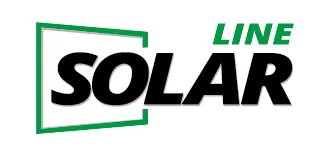PERT solar cell | All that you need to know
PERT solar cell | All that you need to know

PERT solar cells are rated highly among the super high-efficiency solar energy technologies that can be incorporated in mono facial and bifacial solar cell designs.
Even though PERT solar cells are a bit costlier to manufacture than their conventional silicon counterparts and are primarily used in niche industries such as solar cars or space applications, all solar cell makers are striving to build and market them with an intent to give high-end and qualitative solutions to their consumers. Bifacial solar cells are gaining immense popularity. If nicely positioned in open regions or flat surfaces, they may absorb light and are capable of producing electric energy from both the surfaces- ending up delivering up to 30% increased yields than your conventional cells.
PERT solar cells: How do they work?
PERT stands for Passivated Emitter Rear Totally Diffused cells. They have got a diffused hind surface, which is a drastic shift from the conventional counterparts that use the aluminium-alloy BSF. Simply put, the emitter of a p-type based wafer is created by phosphorus diffusion, and the BSF is accomplished through boron doping in p-PERT.
PERT cells are immune to light-induced obliteration and can acclimate to a bifacial cell shape. These have recently piqued the interest of the solar PV sector and research universities. PV scientists are trying alternate cell architectures to enhance the efficacy of industrially-usable Si solar cells- especially now that the highly relevant PERC structure appears to have attained the plateau of its feasible power transformation efficiency threshold.
Under normal parameters of AM1.5 spectrum at 25°Celcius temperature, high-efficiency passivated emitter; Passivated Emitter Rear Totally Diffused cells achieved an energy conversion efficiency of about 25 per cent. This is the most promising energy conversion efficiency figure ever recorded for a silicon cell based on a non-FZ silicon substrate. The mild boron diffusion in the cell structure of the PERT cell not only diminished the cell's series resistance but also boosted its open-circuit voltage.
The PERC, which stands for passivated emitter rear contact structure, features a localized back surface field, which is the primary differentiator between a p-type PERC and an n-type PERT (BSF). The BSF is sired during metal co-firing operations by doping Al into Si. By establishing high-low conjunction with the p-type Si base wafer, BSF aids in improving solar cell efficiency. Minority runners are repelled by this link, which prevents them from reconnecting on the Si wafer's back surface.
The back surface of a PERT structure, on the contrary, is "completely diffused" with boron (p-type) or phosphorus (n-type). PERT solar cell technology is most commonly used in n-type Si cells. This is to benefit from the superior forbearance to metallic contamination, low temperature coefficient, and reduced light-induced diminishment of n-type Si wafers over p-type Si wafers. Because the bulk of an n-type wafer is loaded with phosphorus, the light-induced breakdown is minimized in n-type Si, presumably due to lower boron-oxygen pairings.
Despite this, the "totally diffused" BSF necessitates the employment of innovative methods like high-temperature POCL and BBr3 diffusion. As a result, manufacturing PERT solar cells is more pricey than PERC.
Yet, the Passivated Emitter Rear Totally Diffused cells' full-area BSF may give a more effective high-low junction passivation rendition than the PERC's confined, coarser Al-based BSF. The tunnel oxide passivated contact (TOPCON) structure can also be integrated with n-type PERT. It has the ability to facilitate the device's output even more.
Due to the Si substrate feathering with extended minority lifespan and no B-O complex associated degradation, N-type silicon solar cells are steadily rising high on the popularity charts. Owing to the processing simplicity, Bifacial Passivation Emitter and PERT n-type solar cells are highly efficient solutions that can be readily industrialized. The generation of P+ emitters was one of the noteworthy PERT techniques. For years, BBr3 diffusion has been established for mass manufacturing, but n-type solar cell industrialization has been hampered by dopant homogeneity and process integration. The combination of boron ink spin coating and POCl3 diffusion in n-PERT solar cells was studied and documented in a research paper. Solar cells with a bifaciality of more than 90 per cent were found to have an efficiency of more than 20.2 per cent, according to the findings.
The n-type bifacial PERT solar cell can be produced using a process flow that includes an ion implanting for single-sided doping. It leads to outstanding emitter junction quality and consistency.
PERT solar cells provide several advantages, most of which are listed as under:
● Unlike PERC solar cells, the PERT version attains high efficiency through passivation on multi-material, i.e. Boron BSF PERT multi ceiling, having no light-induced degradation (LID).
● The cost of ownership is the same as for PERC cells.
● The PERT line may also be employed for mono facial or bifacial cells, imparting it a lot of versatility.
PERT solar cells are manufactured using a variety of innovative methods and combinations to optimize distinctive cell kinds. For more than ten years, new smart technologies such as Atmospheric Pressure Chemical Vapor Deposition (APCVD) systems have been devoted to manufacturing to render goods with high acceptability. In addition, using the Horizontal Tube Furnace, phosphorus emitter and boron BSF are yielded in a single heat cycle, resulting in shorter cycle durations. Because Passivated Emitter Rear Totally Diffused cells may also be utilised in traditional back-sheet modules, reconfiguring the manufacturing line to go from mono facial to bifacial manufacture is a job of a few hours only.
Previous:What is a HJT solar cell?
